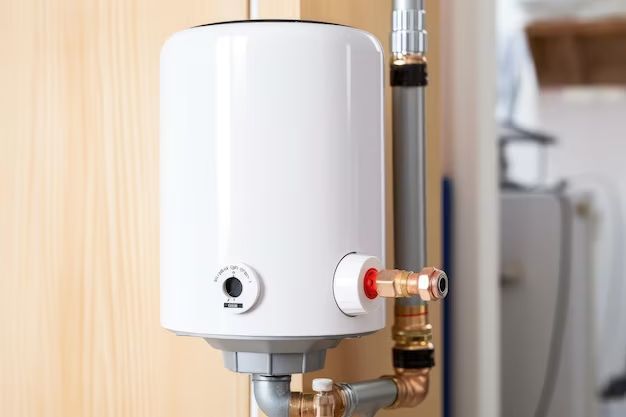Tankless water heaters, also known as on-demand or instantaneous water heaters, provide hot water as needed without using a storage tank. Unlike traditional tank-style heaters that store hot water, tankless heaters heat water directly as it flows through the unit. This results in a constant supply of hot water on demand without running out.
While tankless water heaters have many benefits, they do require some maintenance to keep them operating efficiently. One maintenance task is occasional cleaning of the internal components. Over time, scale buildup and sediment can accumulate inside the heat exchanger and pipes of a tankless unit. This can affect water flow and reduce heating efficiency. So, regular cleaning is recommended as part of the routine care for tankless water heaters.
Page Contents
Do tankless water heaters need to be cleaned?
Yes, tankless water heaters need occasional cleaning. Buildup of mineral deposits, sediment, and limescale will eventually occur in any water heater, including tankless models. Allowing deposits to accumulate can lead to a number of problems:
- Reduced hot water flow rate
- Increased energy usage and higher energy bills
- Potential damage to internal components
- Shortened lifespan of the unit
Regular cleaning helps remove buildup and keeps a tankless heater working properly. The frequency of cleaning needed depends on water hardness and quality. In hard water areas, more frequent cleaning may be required.
Signs it’s time to clean the tankless water heater
Watch for these signs that indicate scale and sediment buildup in a tankless heater:
- Decrease in hot water flow rate
- The heater runs longer to heat water
- It takes longer to get hot water at fixtures
- Higher energy bills
- Scale buildup visible around piping
- Strange noises from the unit while running
- Error codes on the digital display
When flow rate drops by around 15-20%, it’s definitely time to clean the tankless heater. Don’t allow buildup to persist, as it gets harder to remove over time.
How to clean a tankless water heater
Cleaning a tankless water heater involves descaling the internal components. This removes accumulated mineral deposits and sediment. There are two main approaches:
Flushing method
Flushing is the simplest cleaning method and can be done annually or when needed. It involves attaching hoses to inlet/outlet ports and running an acidic descaling solution through the heat exchanger and pipes under pressure. After circulating the descaler, the unit is flushed out with clean water.
Descaling chemicals
Chemical descaling products can be added to the tankless heater to break up scale and sediment. Allowing the solution to circulate before flushing removes deposits over time. Vinegar can be used for mild buildup. Commercial descaling chemicals are stronger for severe buildup.
Professional cleaning service
For heavily scaled units, call a professional service. They use high-pressure systems and commercial-grade chemicals to thoroughly descale the tankless heater and pipes. This may be needed if DIY methods aren’t working.
Descaling maintenance steps
Follow these steps to descale and clean a tankless water heater:
- Turn off power to the unit at the breaker.
- Shut off the cold water inlet valve.
- Open hot water taps to release pressure.
- Disconnect inlet and outlet water connections.
- Attach hoses with shutoff valves to inlet and outlet ports.
- Run descaling solution through the heat exchanger and pipes.
- Rinse thoroughly with clean water to flush out solution.
- Reconnect water lines to the unit.
- Turn on inlet valve and power to the heater.
- Check for leaks and proper operation.
Use kitty litter or towels to absorb any spilled water during cleaning. Rinsing well removes all descaling chemicals.
Descaling solutions
Several options are available for descaling tankless water heaters:
Citric acid
Mixing citric acid powder with water makes an effective chemical descaler. Allow to circulate through the heater for an hour before rinsing.
White vinegar
For mild buildup, white vinegar works to break up limescale and sediment. Let it soak for a few hours before flushing.
Commercial cleaners
Look for commercial tankless heater descaling products. Follow the manufacturer’s instructions on concentration and time needed to work.
Lemi Shine
This cleaner is designed for dishwashers but also works well for descaling tankless units. Make sure to thoroughly rinse after use.
| Descaler | Amount for 1 gallon of water |
|---|---|
| Citric acid powder | 3-6 tablespoons |
| White vinegar | 1 quart |
| Lemi Shine | 2 tablespoons |
Follow package directions when using commercial tankless water heater descaling products.
Preventing buildup
While regular cleaning is needed, there are ways to help minimize scale and sediment buildup:
- Install a whole house water softener if you have hard water. This reduces limescale.
- Have your water tested periodically to check hardness.
- Flush the tankless unit by running water through it for a few minutes periodically.
- Follow manufacturer’s maintenance instructions.
- Check and replace the filter as recommended.
- Hire a professional for annual servicing.
Taking preventive measures can extend the time between cleanings. But expect to descale the tankless heater about annually depending on your water quality.
Conclusion
Allowing mineral scale and sediment to buildup in a tankless water heater can negatively affect its performance and lifespan. Annual descaling maintenance keeps the internal components clear of deposits. This helps ensure your tankless heater runs efficiently for many years.
While cleaning a tankless unit is simple, some key points to remember include:
- Inspect for signs of scale buildup like reduced hot water flow.
- Flush or descale using citric acid, vinegar or commercial cleaners.
- Circulate the descaling solution before rinsing thoroughly.
- Prevent buildup by water softening, flushing and routine care.
- Cleaning annually or more often keeps your tankless in top shape.
Taking proper care of your tankless water heater saves energy, water and maintenance costs over time.
